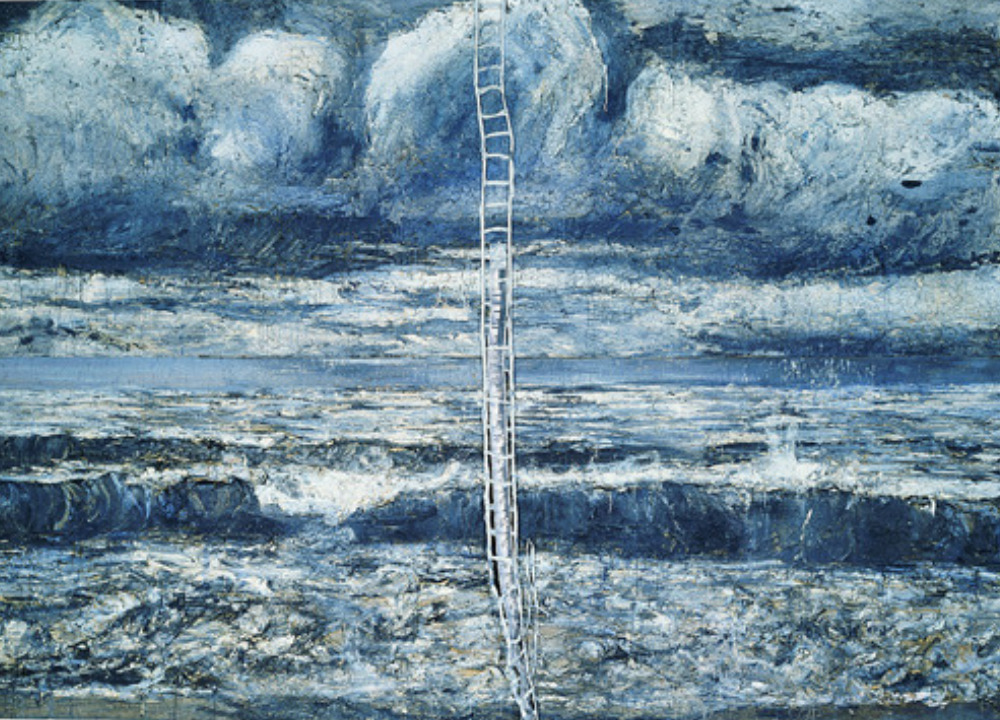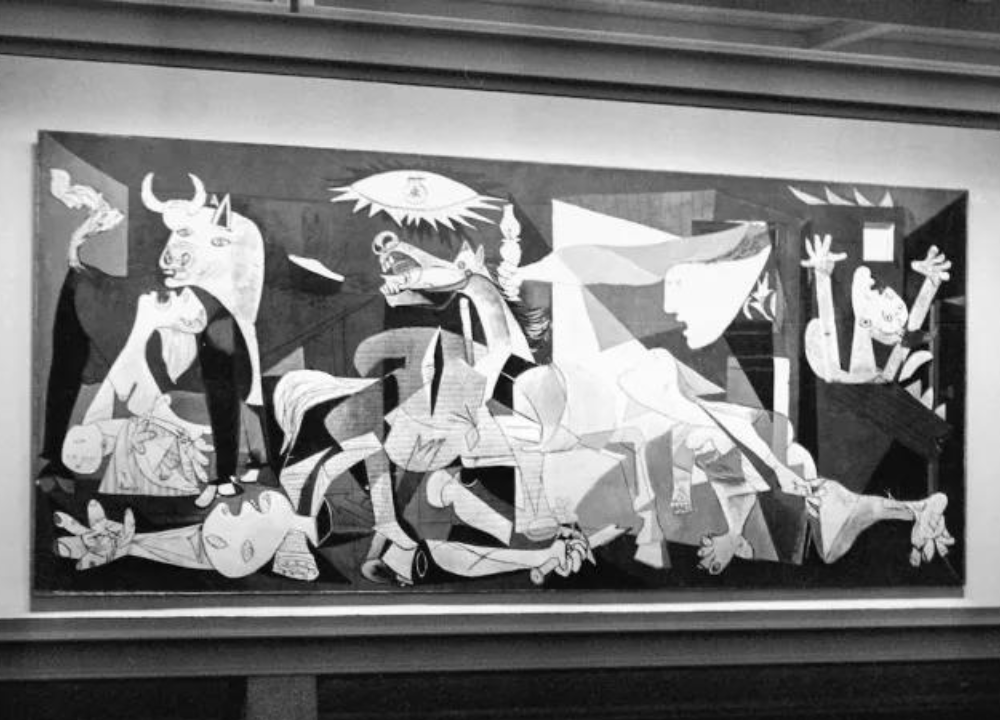“The Storm on the Sea of Galilee” is one of Rembrandt Van Rijn’s most famous paintings. This artwork shows a dramatic scene of a storm at sea.
Created in 1633, it captures both chaos and beauty. The painting features a small boat tossed by huge waves. The light and shadows play a significant role in the scene. Rembrandt’s skill brings the viewer into the action. He shows fear, hope, and divine presence in the midst of turmoil.
This piece is more than just a representation of a storm. It is a reflection of human struggle and faith. Understanding this painting offers insight into Rembrandt’s genius and the themes he explored. Dive deeper into the story behind this masterpiece and its lasting impact.
Introduction To The Painting
The Storm on the Sea of Galilee is a remarkable painting by Rembrandt Van Rijn. It depicts a dramatic scene from the Bible. This artwork captures the fear and chaos of a storm at sea. Rembrandt’s use of light and shadow enhances the emotions of the moment. The painting offers viewers a glimpse into the struggles of the disciples. Let’s explore its historical context and the artist’s background.
Historical Context
This painting was created in 1633. It reflects a time of great change in Europe. The 17th century was marked by religious conflicts and scientific discoveries. The Protestant Reformation had a significant impact on art and culture. Artists began to explore deeper themes of faith and humanity.
Rembrandt’s work often focused on biblical stories. The Sea of Galilee was a common setting in these tales. The storm represents more than just nature’s fury. It symbolizes the struggles of faith faced by the disciples. This piece connects deeply with the audience’s emotions.
- Year of Creation: 1633
- Medium: Oil on canvas
- Current Location: Isabella Stewart Gardner Museum, Boston
| Event | Year |
|---|---|
| Protestant Reformation | 1517 |
| Thirty Years’ War | 1618-1648 |
| Scientific Revolution | 16th-17th Century |
Artist Background
Rembrandt Van Rijn was born in 1606 in Leiden, Netherlands. He became one of the most famous painters of the Dutch Golden Age. His unique style combined realism and emotion. Rembrandt studied at the University of Leiden and learned from other artists.
He created many notable works throughout his life. His paintings often focused on biblical themes, portraits, and landscapes. Rembrandt’s techniques changed the course of art. He mastered light and shadow, known as chiaroscuro. This technique gives depth and life to his paintings.
- Notable Works:
- The Night Watch
- Portrait of an Elderly Woman
- The Jewish Bride
- Death: 1669
- Legacy: Influenced many artists after him
Rembrandt’s life was not without challenges. He faced financial difficulties and personal losses. Yet, his passion for art remained strong. His work continues to inspire and move audiences today.
Artistic Elements
The Storm on the Sea of Galilee, painted by Rembrandt Van Rijn, showcases remarkable artistic elements. These elements enhance the emotional impact of the scene. Rembrandt captures a moment of chaos and struggle. His use of composition techniques and color palette play vital roles in telling this dramatic story. Each brushstroke adds depth and meaning to the painting.
Composition Techniques
Rembrandt’s composition in The Storm on the Sea of Galilee is striking and effective. He uses several techniques to draw the viewer’s eye. Here are key aspects of his composition:
- Diagonal Lines: The boat tilts dramatically. This angle creates a sense of movement and urgency.
- Focal Point: The central figures are illuminated. This draws attention to their struggle.
- Balance: The composition balances chaos and calm. The turbulent sea contrasts with the stillness of the sky.
Rembrandt also employs a triangular composition. This technique gives stability to the chaotic scene. The triangle formed by the boat and the figures guides the viewer’s gaze. It creates a sense of unity amidst the chaos.
| Technique | Description |
|---|---|
| Diagonal Lines | Creates movement and urgency. |
| Focal Point | Draws attention to central figures. |
| Triangular Composition | Provides stability in chaos. |
Color Palette
Rembrandt’s color palette in The Storm on the Sea of Galilee is rich and dramatic. He uses dark tones to convey emotion and depth. The colors create a sense of danger and urgency.
The dominant colors are deep blues, dark browns, and muted yellows. These colors enhance the stormy atmosphere. The contrasts between light and dark add drama to the scene.
- Dark Blues: Represent the tumultuous sea.
- Earthy Browns: Ground the boat and figures.
- Muted Yellows: Highlight the faces of the disciples.
This careful selection of colors evokes feelings of fear and desperation. Rembrandt’s use of light contrasts also adds depth. The light shines on certain figures, emphasizing their struggle. The overall effect is powerful and moving.
Themes Explored
The Storm on the Sea of Galilee, painted by Rembrandt Van Rijn, captures intense emotions. The artwork shows a moment of chaos on the water. Themes of faith and fear, as well as nature’s power, are central to this piece. These themes resonate deeply with viewers. They reflect human experiences and struggles. Understanding these themes reveals the painting’s significance.
Faith And Fear
The contrast between faith and fear is powerful in this artwork. The disciples face a fierce storm. Some are terrified, while others cling to hope. This duality represents a common human experience.
Faith often emerges in difficult times. The disciples’ reactions show this struggle. Fear can cloud judgment and shake belief. Rembrandt captures these emotions brilliantly. The expressions on the disciples’ faces tell a compelling story.
- Fear: Panic is visible. The storm overwhelms them.
- Faith: Some still trust. They look to Jesus for help.
- Hope: The presence of Jesus symbolizes strength.
This theme invites reflection. It encourages viewers to consider their own faith. The painting challenges us to confront our fears. Faith can provide comfort amid chaos.
| Emotions | Expressions |
|---|---|
| Fear | Panic, confusion |
| Faith | Trust, hope |
Nature’s Power
Nature’s power is vividly depicted in The Storm on the Sea of Galilee. The raging waves and dark clouds show nature’s fury. This portrayal highlights the uncontrollable forces around us. Rembrandt’s brushstrokes create a dynamic scene.
The storm is not just a backdrop; it is a character. It interacts with the figures in the boat. This relationship emphasizes humanity’s vulnerability. People are small against nature’s might. The storm serves as a reminder of our limits.
- Intensity: The waves crash violently.
- Darkness: The sky looms ominously.
- Chaos: The boat is tossed and turned.
This theme resonates with many. It reflects life’s unpredictability. Nature can be both beautiful and terrifying. Through this artwork, viewers feel a sense of awe. The sheer power of nature can inspire respect and humility.
Symbolism In The Artwork
The Storm on the Sea of Galilee by Rembrandt Van Rijn captures a moment of chaos and fear. This masterpiece highlights deep symbolism, connecting faith and struggle. The turbulent sea represents life’s challenges. The disciples’ fear symbolizes humanity’s doubt. Each element in the painting tells a story, inviting viewers to explore its meaning.
Biblical References
The painting draws from the biblical story found in the Gospel of Mark (4:35-41). Jesus and his disciples faced a violent storm while crossing the Sea of Galilee. The disciples, terrified, woke Jesus, who calmed the storm. This event is rich in symbolism and meaning.
- Disciples’ Fear: Represents human doubt in crises.
- Jesus’ Calm: Symbolizes faith and control over chaos.
- The Storm: Reflects life’s unpredictable challenges.
| Element | Symbolism |
|---|---|
| Disciples | Human fear and vulnerability |
| Jesus | Divine power and reassurance |
| Stormy Sea | Life’s trials and tribulations |
Rembrandt captures the intensity of the moment. The disciples’ expressions reflect real fear. The dark waves symbolize overwhelming obstacles. The light surrounding Jesus suggests hope and salvation. This contrast enhances the painting’s emotional impact.
Personal Interpretations
Viewers often connect to the painting on a personal level. Many see their struggles reflected in the storm. The disciples’ fear resonates with anyone facing tough times. The presence of Jesus offers comfort and strength.
- Connection to Daily Life: Challenges can feel overwhelming.
- Faith in Difficult Times: Many find strength in their beliefs.
- Community Support: Just like the disciples, people face struggles together.
Each viewer may interpret the artwork differently. Some see it as a reminder of faith. Others view it as a representation of life’s unpredictability. The vivid emotions captured by Rembrandt encourage deep reflection. This painting invites conversations about fear, faith, and resilience.
Influence Of Baroque Style
The Storm on the Sea of Galilee by Rembrandt Van Rijn is a striking example of Baroque art. This painting captures a moment of intense fear and chaos as a storm rages on the sea. Rembrandt’s use of light and shadow creates a dramatic scene. His style reflects the Baroque period’s emphasis on emotional depth and visual impact. The influence of Baroque style is evident in the way Rembrandt portrays movement and human emotion. This adds to the painting’s overall power and significance.
Dramatic Lighting
Lighting in Baroque art plays a crucial role in shaping the viewer’s experience. Rembrandt’s use of light in The Storm on the Sea of Galilee is a prime example of this technique. He employs chiaroscuro, the contrast between light and dark, to enhance the drama of the scene.
The light focuses on key elements, guiding the viewer’s eye. This technique creates a sense of tension and urgency. Here are some points about the dramatic lighting:
- Light illuminates the figures in distress.
- Shadows create depth and intensity.
- The stormy sky contrasts with the illuminated boat.
The following table highlights how Rembrandt uses lighting:
| Element | Lighting Effect |
|---|---|
| Figures | Brightly lit to show fear |
| Water | Reflects light, enhancing chaos |
| Sky | Dark and ominous, adds tension |
Through this dramatic lighting, Rembrandt captures the emotional turmoil of the scene. The viewer feels the panic and fear of the disciples as they struggle against the storm.
Emotional Expression
Emotional expression is a hallmark of Baroque art. In The Storm on the Sea of Galilee, Rembrandt masterfully conveys the fear and desperation of the disciples. The faces of the figures reflect their inner turmoil. Each expression tells a story of struggle and hope.
Rembrandt portrays a range of emotions, from sheer terror to determination. This diversity of expression enhances the painting’s narrative. Key aspects of emotional expression include:
- Facial expressions reveal fear.
- Body language shows tension and movement.
- Color choices evoke feelings of chaos.
The following list outlines specific emotions expressed in the painting:
- Fear of drowning
- Desperation for help
- Hope for salvation
These elements combine to create a powerful emotional impact. The viewer connects with the disciples’ plight. Rembrandt’s ability to capture deep human emotion is a defining feature of his work. This connection makes The Storm on the Sea of Galilee a timeless masterpiece.
Conclusion
“The Storm on the Sea of Galilee” shows deep emotion and drama. Rembrandt captures fear and hope in his art. The painting invites viewers to reflect on their own struggles. Nature’s power and human vulnerability come together beautifully. Each detail tells a story of faith and courage.
Rembrandt’s skill makes this piece timeless and relatable. Understanding this artwork enriches our appreciation for his genius. Dive deeper into its meaning. Explore how it connects to your own experiences. Art has a way of touching our hearts. Let this painting inspire you.




